LAB REPORT
Science and Technology Making Headlines
July 13, 2018

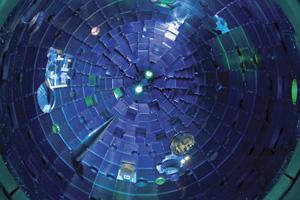
NIF’s target chamber is where the magic happens -- temperatures of 100 million degrees and pressures extreme enough to compress the target to densities up to 100 times that of lead are created there. Photo by Jason Laurea/LLNL
Energize me
The 192-beam laser at the National Ignition Facility (NIF) has set a new energy record, delivering a 2.15 megajoules (MJ) pulse to its target chamber.
The largest and most energetic laser in the world achieved a 10 percent increase on the previous record of 1.9 MJ -- a milestone set back in March 2012.
This demonstration shot successfully meets a National Nuclear Security Administration (NNSA) Level 2 milestone for 2018. The demonstration could see NIF operate at substantially higher energies in the future -- and well beyond the original design specification of 1.8 MJ.
The purpose of this experiment was to demonstrate the highest energy NIF can safely deliver with its current optics and laser configuration. Increasing NIF’s energy limit will expand the parameter space for stewardship experiments and provide a significant boost to the pursuit of ignition -- a key element of NNSA’s Stockpile Stewardship Program.

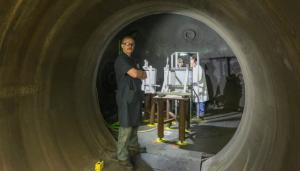
Firing Tank Operator Drew Carlson (foreground) safeguards the mouth of the 10kg spherical firing tank at LLNL’s High Explosives Applications Facility as Electronic Technician Raya Yy (background, left) and Ramrod Shawn Strickland wire a high explosive charge for an experiment. The experiment will provide data important to certifying that a refurbished nuclear warhead will work without conducting a full-scale explosive nuclear test. Photo by Julie Russell/LLNL
Life extension on track
The W80 is a small American thermonuclear warhead designed for deployment on cruise missiles. A program has been implemented to extend the life of the warhead, called the W80-4 LEP, or life extension program. The National Nuclear Security Administration (NNSA) recently gave passing grades to the plans to refurbish certain components as well as to the proposed approach to developing component cost estimates.
The warhead, once refurbished, will be paired with a new cruise missile that is being developed by the U.S. Air Force. Lawrence Livermore is the lead nuclear design agency and is working with Sandia National Laboratories, the lead non-nuclear design agency.
The next-generation supercomputer, Sierra, with a peak speed of 125-petaFLOPs (floating point operations per second), sited at Livermore, will play a central role in certifying the replacement warhead. In addition to the new hardware, code advances have enabled a shift from 2D to 3D modeling, with a special focus on uncertainty quantification. These advances alleviate the need to rely on approximations that were required during the nuclear test era.

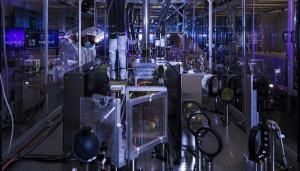
The L3-HAPLS advanced petawatt laser system has been declared fully integrated and operational at the ELI Beamlines Research Center in Dolní Břežany, Czech Republic, and is now ready for integration with the experimental systems and first experiments.
As it HAPLS
A workhorse was inaugurated earlier this month. Its birth was attended by the American and European laser elite. Built and developed under the California sun at the Lawrence Livermore National Laboratory (LLNL), it found its home in Dolni Brezany, near Prague, in the Czech Republic.
“HAPLS has found a beautiful home here,” said Bill Goldstein, LLNL director, in his speech at the celebration. Its name stands for High-Repetition-Rate Advanced Petawatt Laser System; locals often call it just L3 as it will be the third laser system at the Extreme Light Infrastructure Beamline facility (ELI BL).
Leading the L3-HAPLS project allowed LLNL to draw on its decades of pioneering laser research and development and apply that expertise to advance new laser concepts important for its mission as a national laboratory. The system consists of the main petawatt beamline capable of delivering 45 joules (J) of energy per pulse and is energized by diode-pumped lasers, capable of delivering up to 200J of energy per pulse.
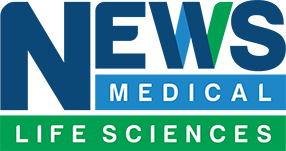
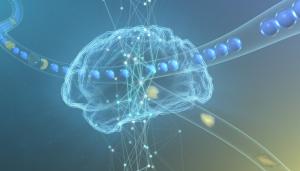
Using supercomputers, a Lawrence Livermore team and their collaborators were able to create a “connectome” -- a model of the structural connectivity of the human brain similar to this image -- from magnetic resonance imaging (MRI) data at exponentially faster speeds than possible before. Image courtesy of National Institutes of Health.
Computing on the brain
Since the wars in Afghanistan and Iraq began in 2001, more than 350,000 cases of traumatic brain injury (TBI) in servicemen and women have been reported to the Department of Defense. Despite several decades of failed clinical trials, there remains no acute treatment for TBI and few tools to aid clinicians in providing a prognosis for TBI patients, military or civilian.
But through a new multi-year project involving the Department of Energy’s (DOE) Lawrence Livermore (LLNL), Lawrence Berkeley and Argonne national laboratories, in collaboration with the Transforming Research and Clinical Knowledge in Traumatic Brain Injury (TRACK-TBI) consortium led by the University of California, San Francisco (UCSF) and involving other leading universities around the country, scientists and engineers plan to simultaneously challenge DOE’s supercomputing resources, advance artificial intelligence capabilities and enable a precision medicine approach for TBI.
LLNL’s involvement in the TBI research effort sprang from discussions held at the Lab in January involving several national laboratories, the Department of Veterans Affairs and UCSF. Running parallel to the TRACK-TBI project, funded primarily by the National Institutes of Health’s National Institute of Neurological Disorders and Stroke, DOE scientists will analyze some of the largest and most complex TBI patient data collected, including advanced computed tomography and magnetic resonance imaging, proteomic and genomic biomarkers and clinical outcomes using state-of-the-art artificial intelligence-based technologies and the nation’s top supercomputing resources. These systems will be integrated into DOE’s research in science and energy and national security programs.
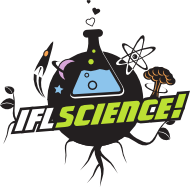
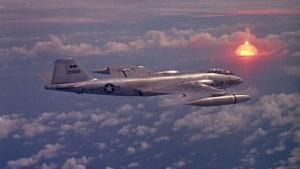
Aerial view of Operation Hardtack nuclear test.
Blasts from the past
For the last five years, Lawrence Livermore National Laboratory (LLNL) has been working tirelessly to preserve footage of the nuclear tests conducted by the United States between 1945 and 1962. The effort is led by LLNL nuclear physicist Greg Spriggs and all the films are scanned, reanalyzed and then made available to the wider public on the Laboratory’s Youtube channel.
Last week, the Lab released its largest batch of movies yet, with around 250 videos from eight different series of tests that cover a period of roughly a decade. The earliest was Operation Upshot-Knothole in 1953 and the last one was Operation Dominic, which took place in late 1962.
Operation Dominic is particularly significant as it happened during one of the most tense periods of the Cold War, after the Bay of Pigs invasion. It was the single biggest testing program conducted by the United States and the last of its atmospheric testing, only a few months before the U.S. and the Soviet Union signed the Limited Test Ban Treaty in 1963.





